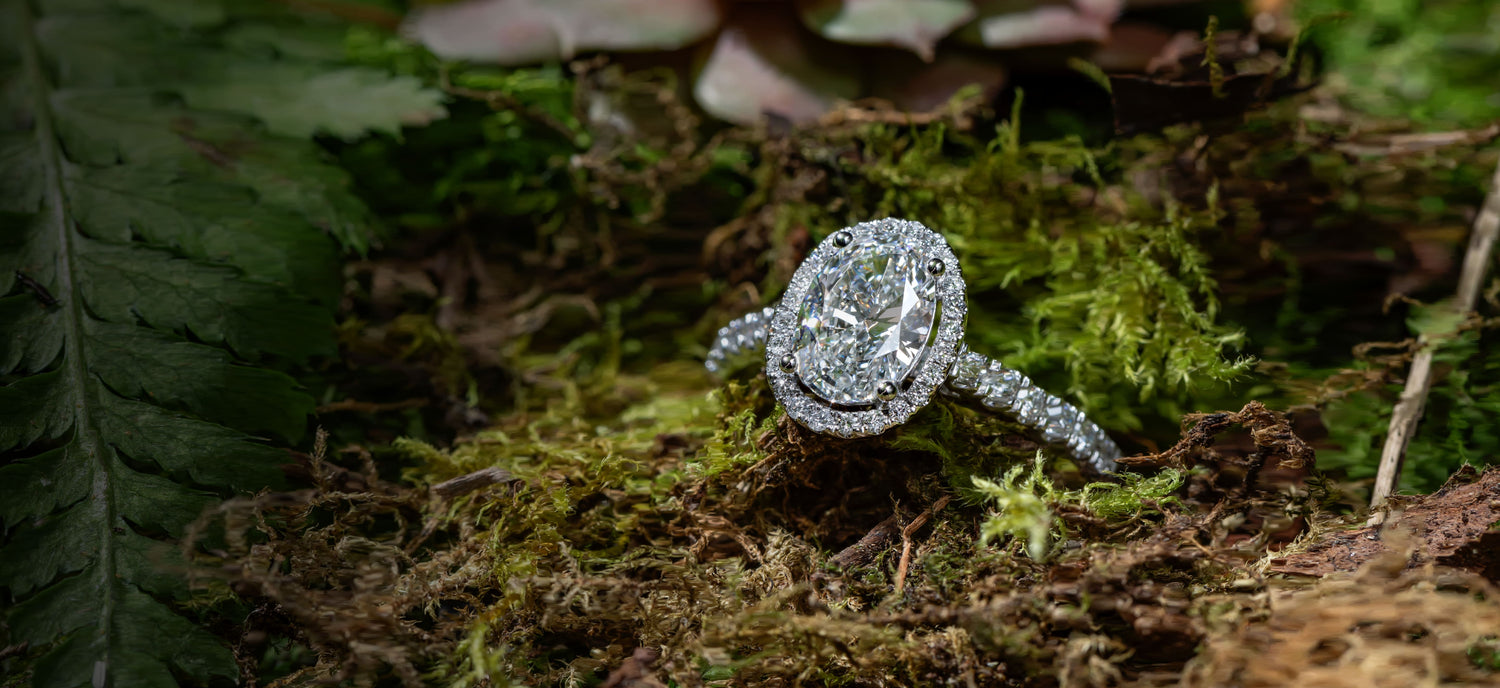When light enters and leaves a diamond, the essential character and beauty of the diamond is revealed.
Lab Grown Diamonds
What is a lab grown diamond?
Simply speaking, they are just that - diamonds grown in a lab. Grown from tiny carbon seeds, they have the same physical, chemical and optical properties as natural diamonds, but without the environmental impact of the mining process.
A diamond simulant or “fake diamond” is completely different. These are alternative gemstones intended to imitate the appearance of a diamond, for example a Cubic Zirconia or Moissanite.
How are they grown?
The journey of a natural diamond begins roughly 100 miles beneath the Earth’s surface, facing temperatures of up to 2,200°F and pressure of up to 330 tonnes.
When creating a lab grown diamond we need to try and replicate these conditions within a controlled environment. There are 2 main processes used to create diamonds, ‘High Pressure High Temperature’ (HPHT) and ‘Chemical Vapour Deposition’ (CVD).
Both processes are slightly different, but the end result is the same, to create the high temperature and pressure needed to replicate the natural process within the Earth’s mantel - turning that tiny carbon seed into a stunning diamond.
How does quality compare?
When talking about the quality of a diamond, it all comes down to the details on a diamond certificate with the colour, clarity, etc. Whether it is a natural or lab grown diamond, they are all graded and certified using the exact same parameters and system.
When it comes to natural or lab grown we use the 3 highest regarded certifications in the industry - GIA, IGI and HRD - and work to the highest standards. The only difference is the certificate will say natural or lab grown.
Why choose a lab grown diamond?
The main advantage of lab grown is cost reduction. Lab grown diamonds are only a fraction of the price of natural diamonds, meaning you will be able to get a far larger size or higher quality for the same price of a natural.
The environmental impact is another benefit. While natural diamonds are mined from within the earth meaning huge areas must be cleared and mined, a lab grown diamond is created in a controlled environment with very little environmental impact.
Something to bear in mind: in creating lab grown diamonds, a certain amount of energy is needed, but as electricity is moving to renewable sources, this element is becoming increasingly “green”.
Which is the best choice for you?
This really comes down to the individual. Currently natural diamonds are still the most popular, although lab grown have spike in popularity in recent years.
A natural, mined diamond, may hold more of a romance as it is one of nature’s miracles having been produced over millions of years. However, others may view lab grown diamonds as a ‘human’ miracle, crafted to preserve the environment for the future.
Style preference and budgetary two major factors to consider as you will get a larger lab grown diamond compared to that of a natural diamond at the same price. While quality and optics are no need for concern, there are however issues about whether lab grown diamonds hold their value as well as their natural counterparts.
FAQ
Still have questions? Take a read through our FAQ from people just like you, and if your queries are still left unanswered, please get in touch.
Our expert advisors are more than happy to talk through options and offer advice on a one-on-one basis, depending on each customer’s needs and circumstances.
Are lab grown diamonds real diamonds?
Will people be able to tell my diamond is lab grown?
What makes them ethical?
Why are they less expensive?
Do lab grown diamonds have the same longevity as natural diamonds?
 Book an appointment
Book an appointment
 Store location
Store location

